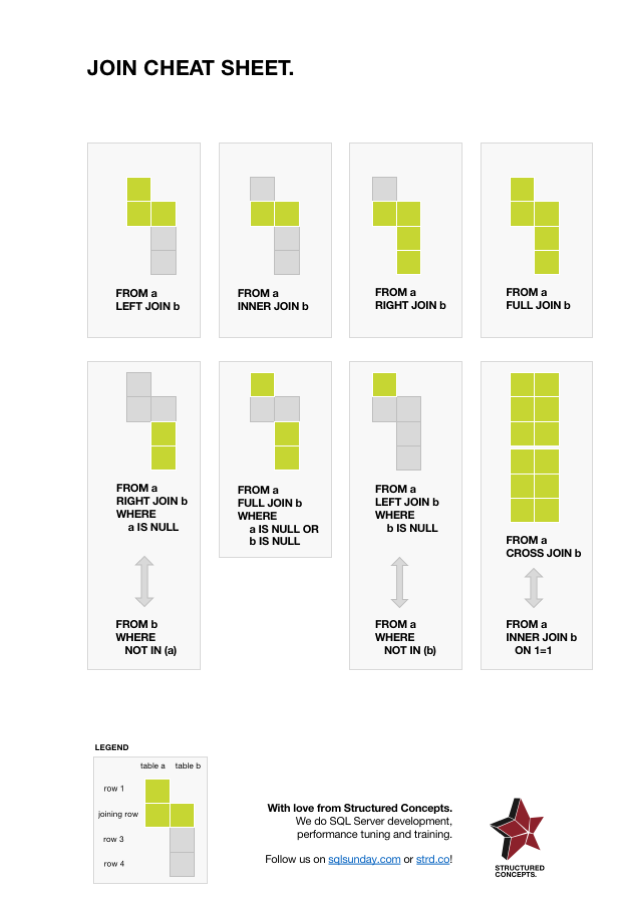Some operations in SQL Server will turn your entire query plan serial (single-threaded), others will just reserve a so-called “serial zone”. I read up on this stuff a number of years ago (including a great post by Paul White), and thinking that some things must have changed since, I decided to go see for myself.
The SQL Server Calendar project
I’m the type of developer that invents wheels. Yes, every wheel I design is unique in its own way, and hand-crafted for a specific purpose. And so it has also been with calendar dimensions (typically when I do data warehousing work).
This got me thinking – why not design the mother of all calendar dimensions? One that includes every conceivable calendar and property that I and others could use and re-use. One that could save me a ton of coding, and lessen the burden of having to validate it each and every time?
And that’s how I got started designing my one calendar script to rule them all.
T-SQL Tuesday #104: Code you would hate to live without
 Everyone has a script, a hack or a checklist they can’t function without. In this edition of T-SQL Tuesday, Bert Wagner challenged us to write about our favorite scripts. This is my take.
Everyone has a script, a hack or a checklist they can’t function without. In this edition of T-SQL Tuesday, Bert Wagner challenged us to write about our favorite scripts. This is my take.
Quick and dirty: How to right-align numeric columns in SSMS
Here are 50 random numbers:
--- 50 random numbers WITH cte AS ( SELECT 0 AS i, 100000.*POWER(RAND(CHECKSUM(NEWID())), 3) AS n UNION ALL SELECT i+1, 100000.*POWER(RAND(CHECKSUM(NEWID())), 3) FROM cte WHERE i<50) SELECT * FROM cte;
And in SSMS, with the variable-width default font, the output looks… slightly-less-than-readable in the grid view:

We could use STR() to format the output, but the indent looks a little off:
--- 50 random numbers WITH cte AS ( SELECT 0 AS i, 100000.*POWER(RAND(CHECKSUM(NEWID())), 3) AS n UNION ALL SELECT i+1, 100000.*POWER(RAND(CHECKSUM(NEWID())), 3) FROM cte WHERE i<50) SELECT *, STR(n, 12, 2) AS with_str FROM cte;

Here’s something I’ve found: the space character is roughly about half the width of a typical number character. So replace every leading space with two spaces, and it will look really neat in the grid:
--- 50 random numbers
WITH cte AS (
SELECT 0 AS i, 100000.*POWER(RAND(CHECKSUM(NEWID())), 3) AS n
UNION ALL
SELECT i+1, 100000.*POWER(RAND(CHECKSUM(NEWID())), 3)
FROM cte WHERE i<50)
SELECT *, STR(n, 12, 2) AS with_str,
REPLACE(STR(n, 12, 2), ' ', ' ') AS with_replace
FROM cte;

(and terrible everywhere else, obviously.)
Grouping dates without blocking operators
It’s not entirely uncommon to want to group by a computed expression in an aggregation query. The trouble is, whenever you group by a computed expression, SQL Server considers the ordering of the data to be lost, and this will turn your buttery-smooth Stream Aggregate operation into a Hash Match (aggregate) or create a corrective Sort operation, both of which are blocking.
Is there anything we can do about this? Yes, sometimes, like when those computed expressions are YEAR() and MONTH(), there is. But you should probably get your nerd on for this one.
Quiz: What’s going on here, then?
I’m trying a new type of blog post, and if it works out, I would be happy to post more of the same going forward. The format is a real-world troubleshooting mystery, and I’ll clue you in to the details along the way.
How quickly can you crack it?
Get the join cheat sheet!
Download and print this nifty little PDF with all of the INNER, LEFT, RIGHT, FULL and CROSS JOINs visualized! It’ll look great on your office wall or cubicle. Your coworkers and your interior decorator will love you for it.
How it works: For each join example, there are two tables, the left and the right table, shown as two columns. For the sake of simplicity, these tables are called “a” and “b” respectively in the code.
You’ll notice that the sheet uses a kind of pseudo-code when it comes to table names and column names.
An alternative to data masking
Dynamic data masking is a neat new feature in recent SQL Server versions that allows you to protect sensitive information from non-privileged users by masking it. But using a brute-force guessing attack, even a non-privileged user can guess the contents of a masked column. And if you’re on SQL Server 2014 or earlier, you won’t have the option of using data masking at all.
Read on to see how you can bypass dynamic data masking, and for an alternative approach that uses SQL Server column-level security instead.
Computed columns with scalar functions
Scalar functions can be a real headache when you’re performance tuning. For one, they don’t parallelize. In fact, if you use a scalar function in a computed column, it will prevent any query that uses that table from going parallel – even if you don’t reference that column at all!
Encrypting SQL Server connections with Let’s Encrypt certificates
Encrypting your SQL Server’s TDS connections should be high on your list of things to do if you’re concerned with the privacy of your data. This often boils down to one big problem: can you get a valid certificate without paying a ton of money, and will it work with SQL Server?
So follow me down the rabbit hole, as we work out the steps to using Let’s Encrypt to create (and auto-renew!) a certificate for SQL Server. This is going to get technical.
